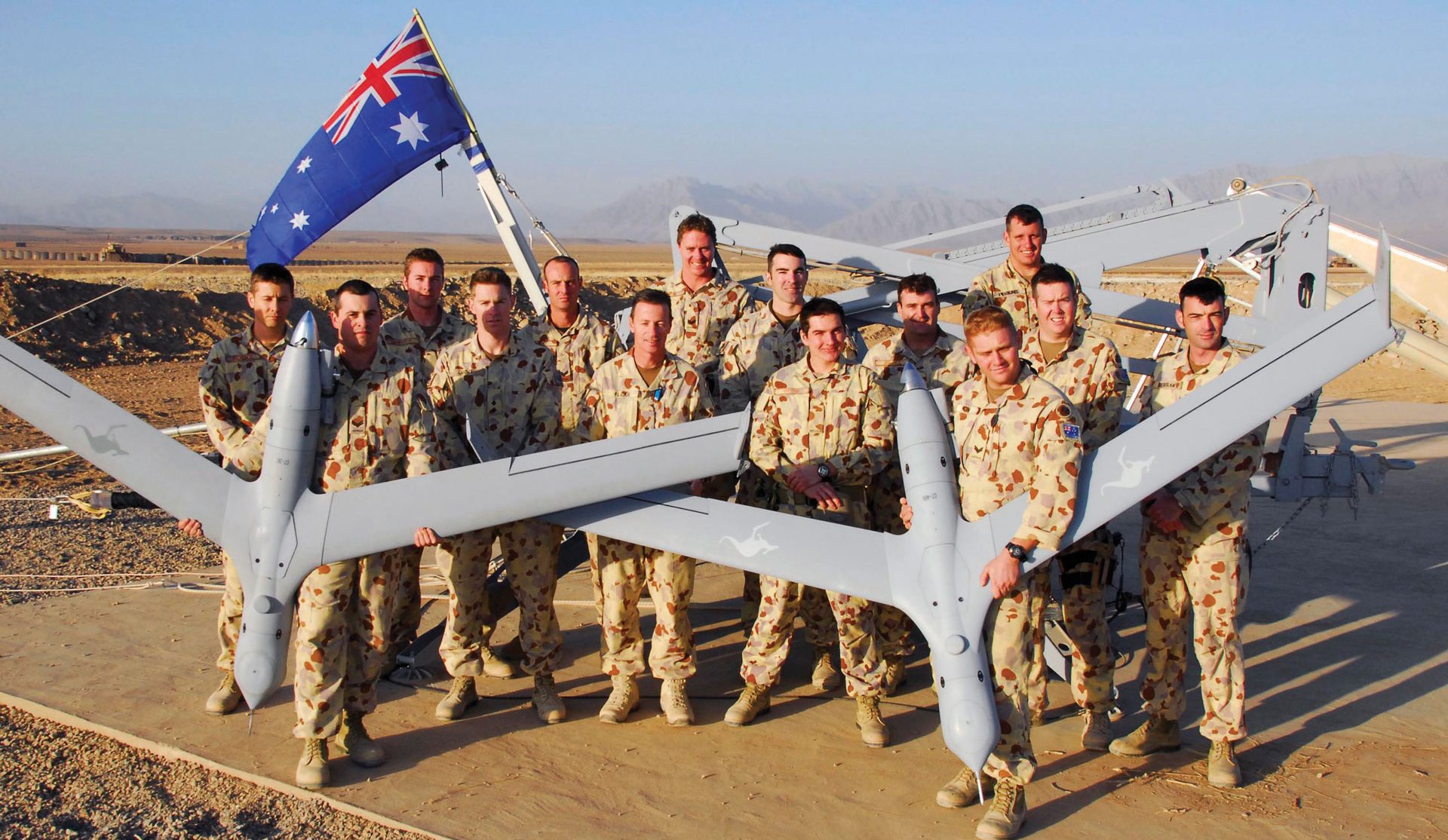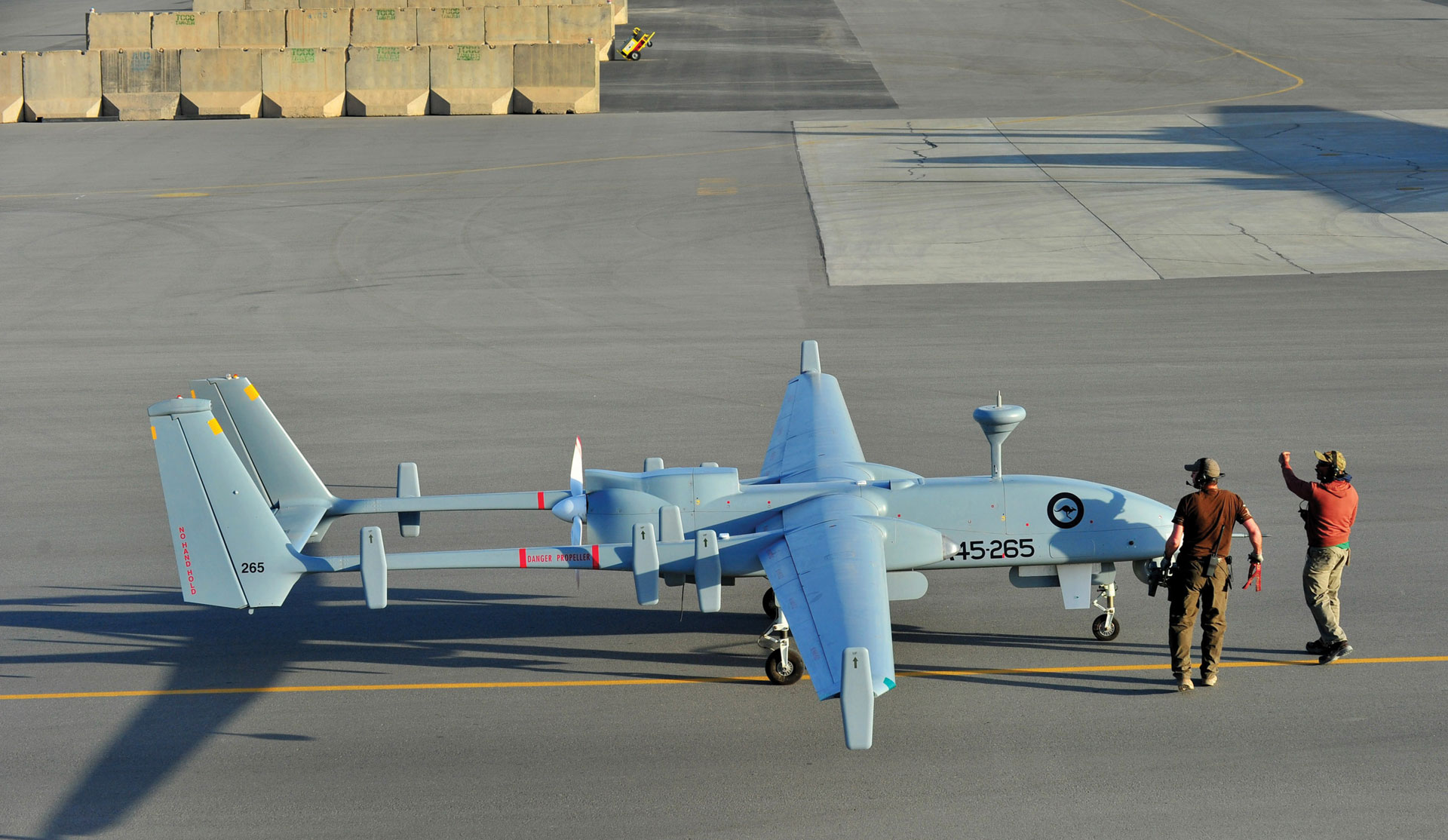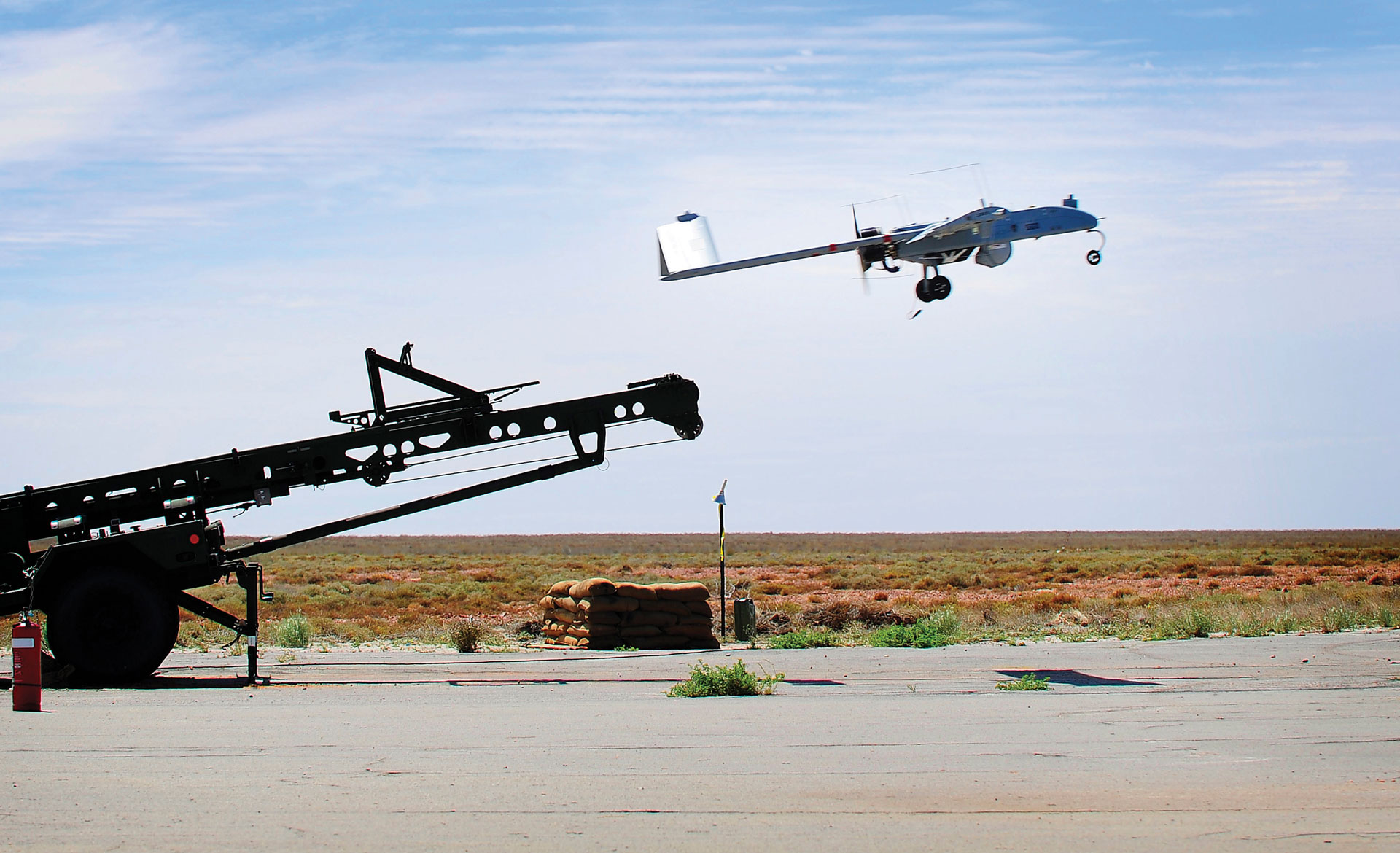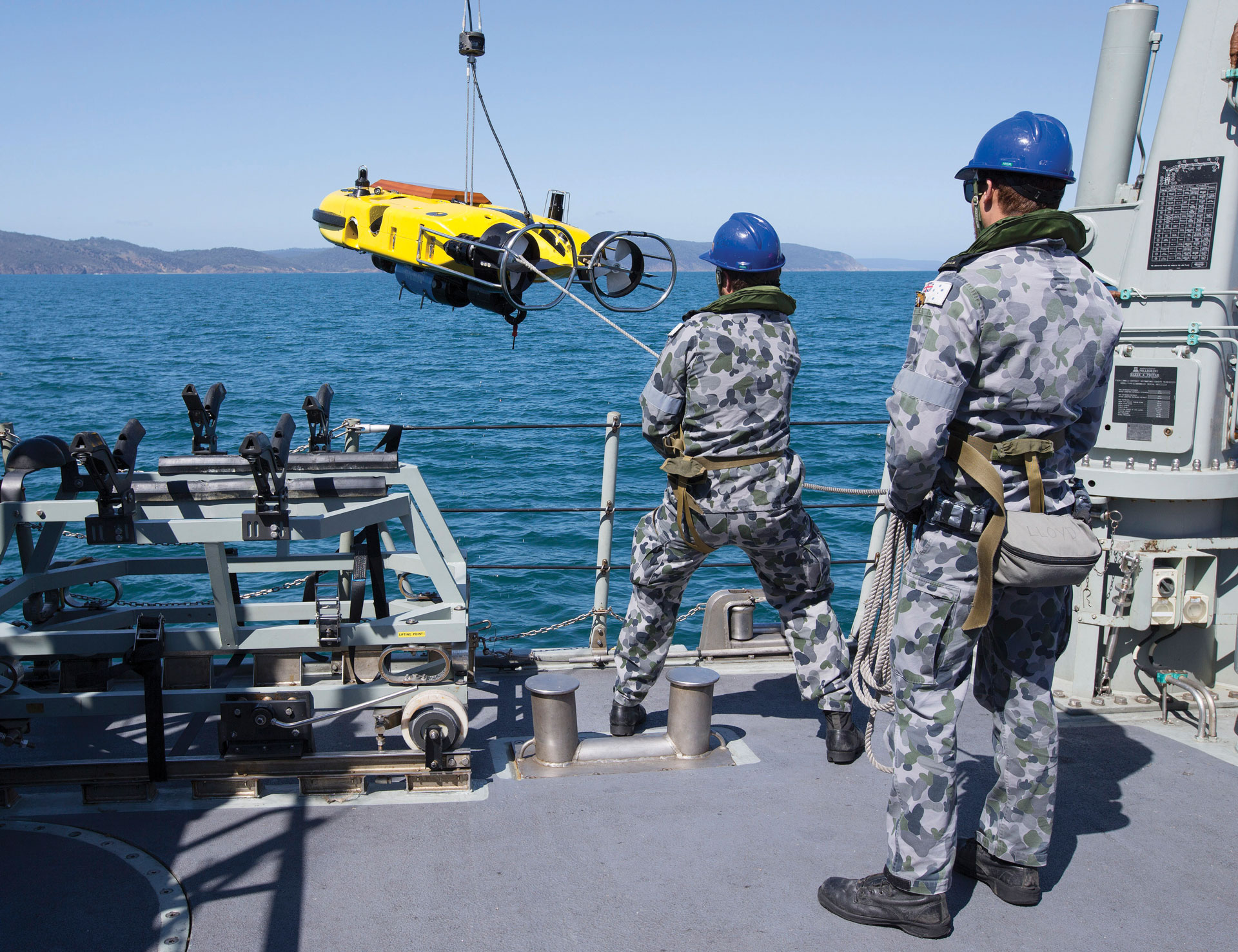
History of defence robotics
Defence systems are heavily reliant on computer ‘vision’ technologies. These technologies span the electromagnetic spectrum from radio frequency to microwave, infrared, visible, ultraviolet and ionising radiation, as well as multi-spectral and hyper-spectral imaging. Acoustic imaging is used for underwater active sonar systems. Also important for defence are event-based sensors for computer-based scene analysis (as opposed to traditional frame-based sensors to assist human analysis). Such sensors process information based on efficient smart pixels that create events instead of images.
Like the highly successful leveraging of robotics in the mining industry (see Chapter 4), the defence sector also has experience with field robotics for military operations. For example, the Royal Australian Airforce (RAAF) Heron (a remotely piloted unmanned aircraft system) flew from 2010 to 2012 in Afghanistan. Since then, it has been used for training prior to the introduction of the MQ-4C Triton. Similarly, Scan Eagles in Afghanistan were used for intelligence, surveillance and reconnaissance (ISR) missions between 2007 and 2012, flying 6,200 missions and 32,000 hours. These systems were eventually replaced with a high-end, military grade tactical unmanned aerial system (UAS) for tactical reconnaissance and surveillance missions. Army Shadow 200 operated over 10,000 hours of flying intelligence, surveillance, targeting and reconnaissance (ISTAR) operations in 2012 to 2013.
Over the past ten years, in Afghanistan and Iraq, the Australian Army has also employed ground robots for a variety of security roles including reconnaissance, vehicle inspection, and the detection and identification of enemy improvised explosive devices (IEDs). Electronic counter measures were rapidly fielded to provide force protection from remote-controlled IEDs. These systems responded autonomously to create jamming effects. Following the success of the US predator drones, Australia initially deployed relatively cheap and light, rapidly acquired systems.
In terms of training, Australia will introduce autonomous small arms target systems into service. These provide moving and reactive ‘human’ targets that add realism and challenge to combat shooting training. The Army will also add to its existing Brigade level unmanned aircraft systems (UAS) by introducing into service military grade UAS to every combat platoon and combat team. Black Hornet UAS will be available down to platoon level, and Wasp UAS to combat team level. The Army is also providing a commercial off-the-shelf multi-rotor UAS to every unit in the Army – Regular, Reserve and Cadets – for training and experimentation.
In the future, the Army anticipates further investment in autonomous ground vehicles for reconnaissance, logistics and casualty evacuation, and manned and unmanned teaming between helicopters and future UASs. The Army will integrate autonomous active protection systems that can detect and neutralise incoming munitions on the new armoured vehicles.
To ensure investment is directed in the right areas, Army is embarking on experimentation and research to better understand the optimal application and balance of smart machines for future use.
The Royal Australian Navy (RAN) operates mine detection robots that are tethered to, and controlled from, Mine Hunter Coastal vessels. Electrically powered Bofors Underwater Systems Double Eagle mine disposal vehicles are equipped with a searchlight, closed-circuit low light television camera and on-board close-range identification sonar. Commands are relayed via a fibre optic link inside the vehicle’s tether, which also relays sensor images for display on the ship’s multifunction console in the operations room. Each Double Eagle vehicle is fitted with either a disposal charge slung beneath or an explosive or mechanical cutter designed to sever the wire rope or chain holding moored mines.





